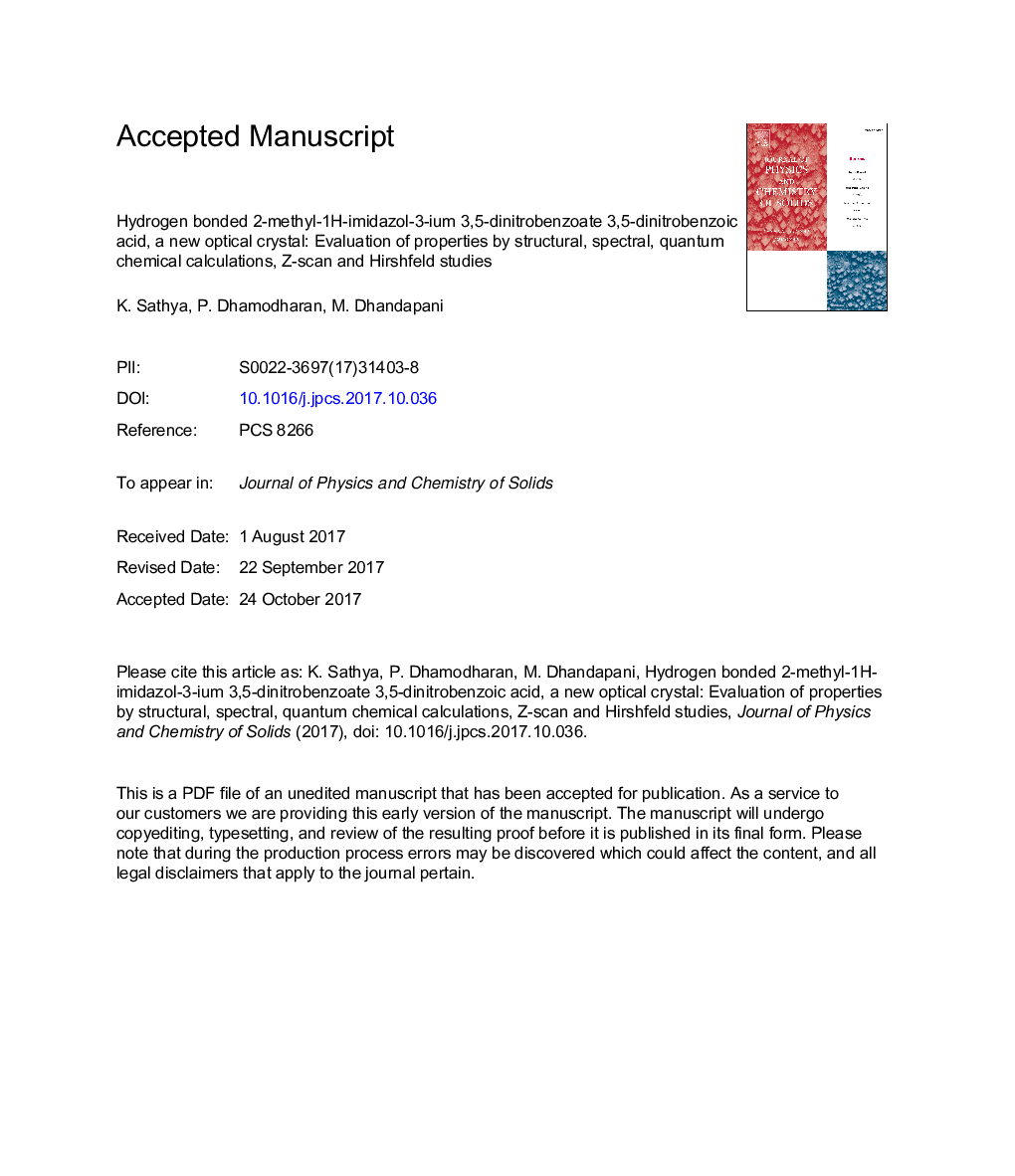| Article ID | Journal | Published Year | Pages | File Type |
|---|---|---|---|---|
| 7920641 | Journal of Physics and Chemistry of Solids | 2018 | 35 Pages |
Abstract
A new hydrgen bonded proton transfer complex, 2-methyl imidazolium 3, 5-dinitrobenzoate 3,5-dinitro benzoic acid (MIDB) was synthesized by the reaction between 2-methyl imidazole with 3,5-dinitro benzoic acid (1:2) in methanol solvent at room temperature. The crystals were subjected to FT-IR spectral analysis to confirm the functional groups of the new compound. Single crystal XRD analysis reveals that MIDB belongs to monoclinic system with P21/c space group. The asymmetric unit consists of one 2-methyl imidazolium cation, one 3, 5-dinitrobenzoate anion and one uncharged 3,5-dinitro benzoic acid moiety. Experimental NMR spectroscopic data and theoretically calculated NMR data correlated very well to estabilish the exact carbon skeleton and hydrogen environment in the molecular structure of MIDB. The thermal stability of the compound was investigated by thermogravimetry and differential thermal analysis (TG-DTA). Computational studies such as optimization of molecular geometry, natural bond analysis (NBO), Mulliken population analysis and HOMO-LUMO analysis were performed using Gaussian 09 software by B3LYP method at 6-31 g basis set level. The calculated first-order polarizability (β) of MIDB from computational studies is 4.1752 Ã 10â30 esu, which is 32 times greater than that of urea. UV-vis-NIR spectral studies revealed that the MIDB has a large optical transparency window. The optical nonlinearities of MIDB have been investigated by Z-scan technique with HeNe laser radiation of wavelength 632.8 nm. Hirshfeld analysis indicate Oâ¯H/Hâ¯O interactions are the superior interactions confirming excessive hydrogen bond net work in the molecular structure.
Related Topics
Physical Sciences and Engineering
Materials Science
Electronic, Optical and Magnetic Materials
Authors
K. Sathya, P. Dhamodharan, M. Dhandapani,
